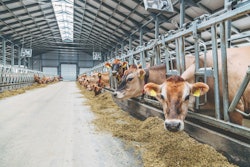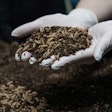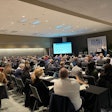
AFIA-KSU 500 course opened my eyes to the technical side of feed manufacturing
Confession: I have never worked in a feed mill.
I’ve been covering the U.S. feed industry since 2009 when I became the editor of Feed & Grain magazine and later as the editor of WATT Global Media’s Feed Management and Feed International magazines in 2013, which of course merged to become Feed Strategy in 2018.
I’ve toured many feed mills. I’ve attended countless international and domestic feed industry trade shows, conferences, special events and seminars. I’ve conducted several interviews a week with feed industry leaders for more than a decade. I have reviewed hundreds of press releases about new feed equipment, new technologies, new innovations. I have stayed on top of regulations and trends impacting feed producers and nutritionists. Yet I have not produced a single pellet.
So, this year when my schedule finally allowed it, I was eager to sign up for the AFIA-KSU 500, a five-week, noncredit feed manufacturing course “Fundamentals of Feed Manufacturing” developed by the American Feed Industry Association (AFIA) and Kansas State University (KSU).
On the first day of the course in early August, we were asked to take an ungraded assessment to gauge where we were in terms of industry knowledge. I did well regarding regulations, identifying types of equipment and some processing questions, but then there were technical questions about things I had never heard of. (At the end of the course next week, we’ll take this quiz again to see how much we’ve learned.)
While some may have been discouraged, I found this invigorating! There’s so much nuance and procedure that I was unaware of, e.g. boiler operations, machinery calibration and testing, etc.
In all, I have dedicated about three to five hours a week on the lectures and course work. The learning modules cover the history of the U.S. feed industry, regulations, quality control, batching systems, particle size, roller and hammermills, pelleting and conditioning and more.
My goal in taking in this course is not change to careers, but to better serve Feed Strategy’s readers and to identify gaps in our feed manufacturing coverage.
The highlight of the course: Discovering the “how and why” behind many feed milling processes.
The worst part: Applied mathematics in the homework assignments (I became a writer for a reason!) but it has been a fun challenge.
Despite your role in the feed industry, I highly recommend this course to anyone looking to round out their understanding of feed production.
You don’t know what you don’t know, so remain curious and embrace every learning opportunity.


















